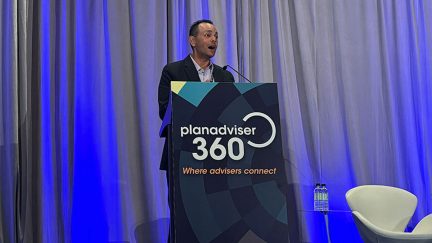Want the latest retirement plan adviser news and insights? Sign up for PLANADVISER newsletters.
DOL Sues ESOP Fiduciaries for Inflated Price of Purchase
The U.S. Department of Labor (DOL) has filed a lawsuit against the fiduciaries of a Virginia-based employee stock ownership plan (ESOP), alleging the defendants failed to protect the assets of the plan as it purchased nearly $21 million in company shares from the president of Sentry Equipment Erectors Inc. who was also a trustee of the ESOP.
Filed in the Western District of Virginia, the lawsuit alleges that the owner of Sentry Equipment Erectors, Inc., Adam Vinoskey, sold his stock to the company’s ESOP at an inflated price in 2010. The overpayment caused a direct loss to the plan and constituted a prohibited transaction under the Employee Retirement Income Security Act (ERISA). The sale also directly injured plan participants who had already earned Sentry stock, as the value of their stock declined because of the company’s substantially increased debt load. The ESOP’s fiduciaries took no action to protect these participants from large losses to their pre-existing retirement assets, the DOL says.
According to the DOL, the alleged violations relate to a 2010 purchase of Sentry stock from Vinoskey. Before 2010, the plan had already purchased almost half of the company, though this earlier transaction is not in question. In December 2010, Vinoskey sold the ESOP his remaining 51,000 shares―52% of the company―at $406 per share, for a total sale price of $20,706,000. This price greatly exceeded that offered to other participants who had previously sold their shares back to the ESOP at prices ranging from $241 to $285 per share. Immediately after the purchase of the Vinoskey stock, the price offered to participants dropped below $285 per share.
An appraisal performed in November 2010 by Capital Analysts especially for the transaction provided the basis upon which the $406 per share price paid to purchase the Vinoskey stock was based, according to the lawsuit. This appraisal contained substantial errors that overstated the value of the company, leading to a share price far above fair market value.
The DOL’s suit seeks to restore all losses to the plan, in an amount determined by the court, and to have any profits gained by the defendants from the sale to be turned over to the plan. It also seeks to have plan fiduciaries removed.
A copy of the complaint is here.You Might Also Like:

Voluntary Fiduciary Correction Program Improvements Take Effect

Chavez-DeRemer Confirmed as Secretary of Labor



